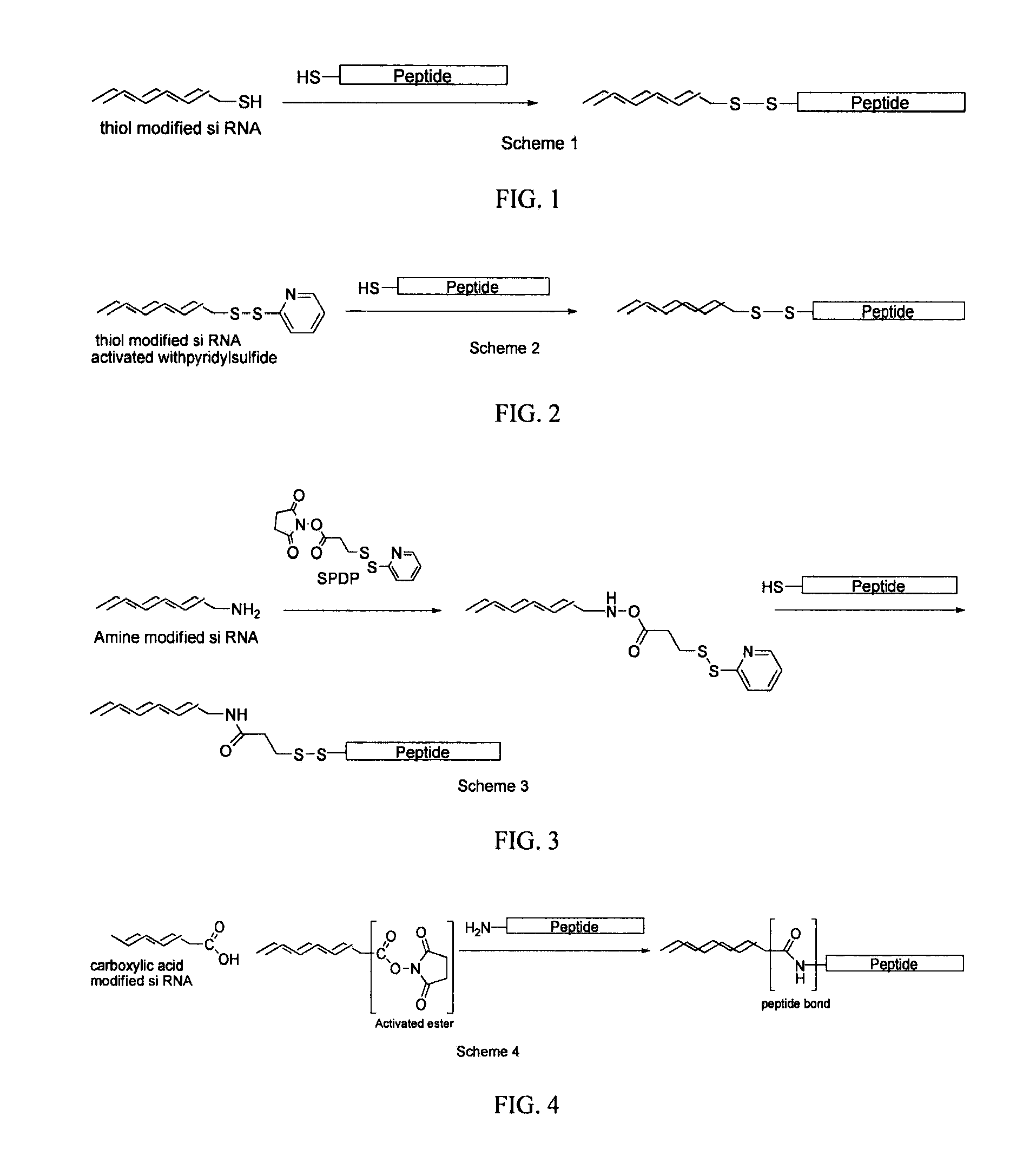Delivery of nucleic acids using cell-penetrating peptides
- Summary
- Abstract
- Description
- Claims
- Application Information
AI Technical Summary
Benefits of technology
Problems solved by technology
Method used
Image
Examples
example 1
Generation of siRNA Conjugates
[0106]By way of example, the 3′- or 5′-terminus of the sense strand is generally used for conjugation. The principal sites of conjugation on antennapedia are the thiol groups of cysteine and the amino group of lysines. In general there are more lysine residues on proteins than cysteine. A brief survey of the literature has shown that the most commonly used and simplest way of chemically conjugating siRNA on to peptides is to link through the thiol group of cysteine. This can be achieved in essentially two ways depending on the modification carried out on the 3′- or 5′-end of the RNA strand. Commercially available siRNA which have been chemically modified at the 3′- or 5′-end with a thiol group represents the most straight forward approach and oxidative coupling between the thiol modified siRNA and the thiol group of cysteine in the protein can be achieved by simply incubating the mixture for 1 h at 40° C. with a thiol cross-linking agent diamide (Sigma)...
PUM
| Property | Measurement | Unit |
|---|---|---|
| Permeability | aaaaa | aaaaa |
| Crosslinkable | aaaaa | aaaaa |
Abstract
Description
Claims
Application Information
 Login to View More
Login to View More - R&D
- Intellectual Property
- Life Sciences
- Materials
- Tech Scout
- Unparalleled Data Quality
- Higher Quality Content
- 60% Fewer Hallucinations
Browse by: Latest US Patents, China's latest patents, Technical Efficacy Thesaurus, Application Domain, Technology Topic, Popular Technical Reports.
© 2025 PatSnap. All rights reserved.Legal|Privacy policy|Modern Slavery Act Transparency Statement|Sitemap|About US| Contact US: help@patsnap.com



